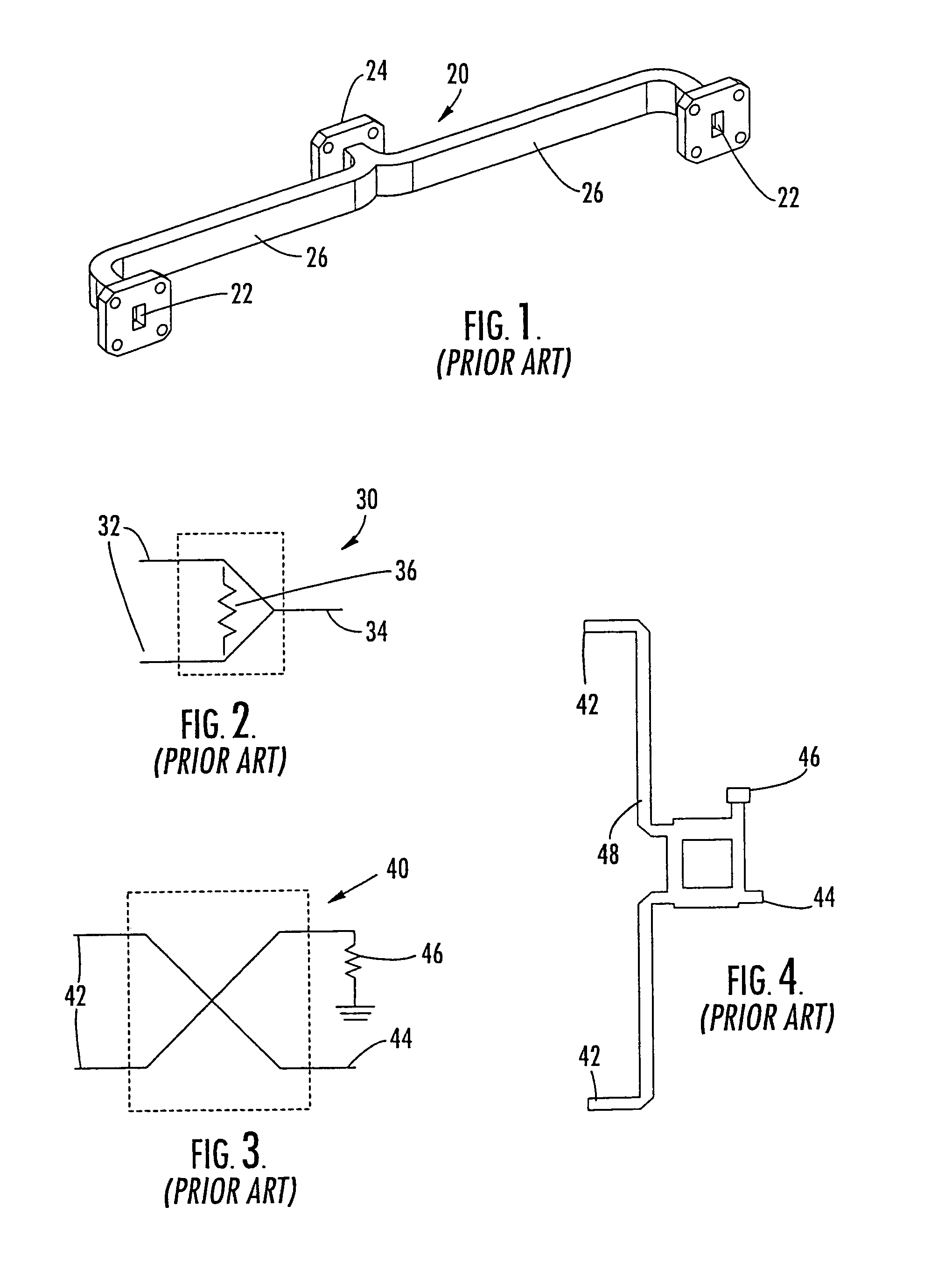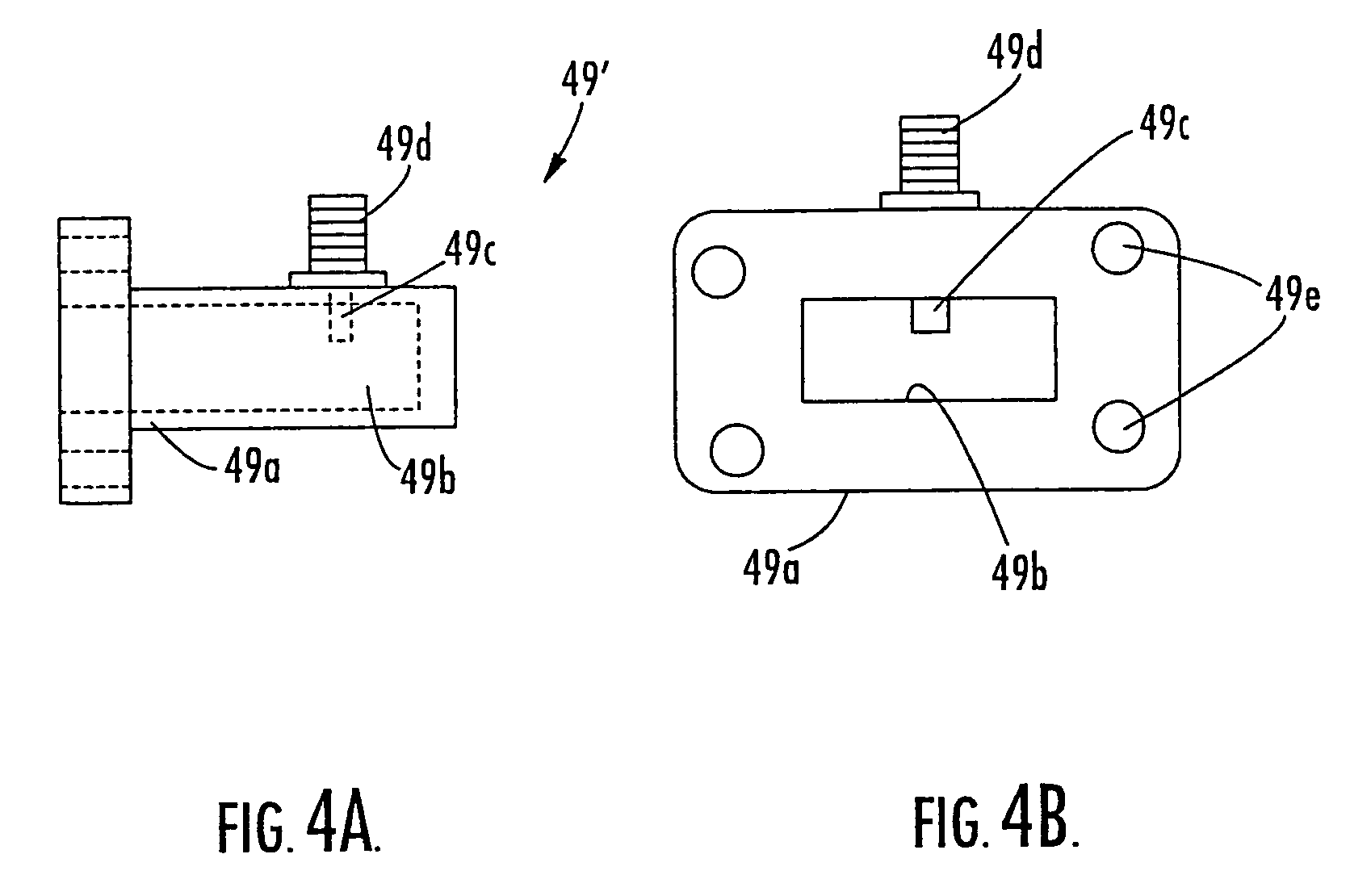Microstrip-to-waveguide power combiner for radio frequency power combining
a power combiner and microstrip technology, applied in the micro field, can solve the problems of large loss, large volume of summing network, and high precision components, and achieve the effects of low loss, small “real estate” and power efficiency
- Summary
- Abstract
- Description
- Claims
- Application Information
AI Technical Summary
Benefits of technology
Problems solved by technology
Method used
Image
Examples
Embodiment Construction
[0033]The present invention will now be described more fully hereinafter with reference to the accompanying drawings, in which preferred embodiments of the invention are shown. This invention may, however, be embodied in many different forms and should not be construed as limited to the embodiments set forth herein. Rather, these embodiments are provided so that this disclosure will be thorough and complete, and will fully convey the scope of the invention to those skilled in the art. Like numbers refer to like elements throughout.
[0034]The present invention is advantageous and power combines radio frequency signals using a combination of microstrip and waveguide or coax and waveguide techniques that result in very low losses. The power combining network of the present invention is extremely compact and can be used at a very low cost. In the present invention, two or more sources of radio frequency energy can be combined in a microstrip-to-waveguide or coax-to-waveguide transitions ...
PUM
 Login to View More
Login to View More Abstract
Description
Claims
Application Information
 Login to View More
Login to View More - R&D
- Intellectual Property
- Life Sciences
- Materials
- Tech Scout
- Unparalleled Data Quality
- Higher Quality Content
- 60% Fewer Hallucinations
Browse by: Latest US Patents, China's latest patents, Technical Efficacy Thesaurus, Application Domain, Technology Topic, Popular Technical Reports.
© 2025 PatSnap. All rights reserved.Legal|Privacy policy|Modern Slavery Act Transparency Statement|Sitemap|About US| Contact US: help@patsnap.com



